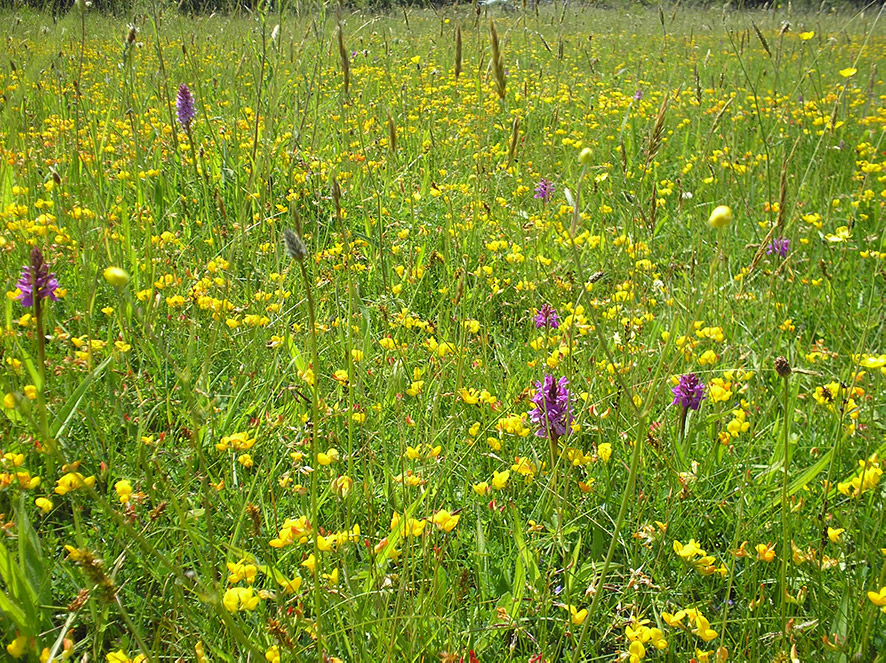
Biodiversity in the Norfolk Coast
A huge number of places in the Norfolk Coast are designated for the local, national and international significance of their biodiversity. Coastal habitats are particularly important, and the area is renowned for its birds. Much of the inland area is arable farmland, which also supports characteristic species. There are also important semi-natural habitats inland, such as lowland heath and ancient woodland.
Rare and characteristic communities and species of plants and animals, including invertebrates, occur and there are sites designated specially for their geological interest. A large part of the inshore and inter-tidal area has been designated as a European Marine Site for its special wildlife features and species.

Bird diversity on the Norfolk Coast
One key aspect of the Norfolk Coast’s biodiversity is its wide range of birds in permanent residence and migratory flocks.
In the summer, the area plays host to breeding waders such as redshank and lapwing on the marshes; bitterns, marsh harriers and bearded tits in the reedbeds; as well as terns and singed plovers on the shingle. Inland, heathland areas support breeding nightjars and woodlarks.
In winter, the marshes see larger and internationally important numbers of wildfowl and waders, with skeins of pink-footed and dark-bellied brent geese giving a special character to coastal skies.
Migration time in spring and autumn is particularly popular with birding enthusiasts – as well as a great variety of migrating birds, rare birds often turn up at these times, sometimes thousands of miles off their normal routes.
A note on biodiversity designations
There are a range of biodiversity designations that apply to the Norfolk Coast. These overlay and overlap based on separate legislation. The number of designations testify to the important of the area for wildlife on a regional, national, European and global level.
You can find out more about these designations in the Conservation Designations summary or on our What is an AONB? page.
Habitat information
Using the links below, you can find information on the area’s characteristic habitats and species, the best places to see them, their sensitivity and safety information, how they are managed and sources of further information.
The Partnership has provided these pages a guide to help you understand, enjoy and protect the area’s wildlife.
Coastal dunes, shingle and lagoons
The sand dunes and shingle form part of the complex habitats that constitute the barrier system which as developed on the north and east Norfolk coast.
Read more about coastal dunes, shingle and lagoons
Coastal grazing marsh and reedbeds
The wet grazing marsh of the north Norfolk coast is the result of saltmarsh being reclaimed by the building of embankments to prevent incursion by seawater.
Read more about coastal grazing marsh and reedbeds
Maritime cliffs
Maritime cliffs and slopes comprise cliff faces, from sloping to vertical, on the coastline where a break in slope is formed by slippage and/or coastal erosion.
Read more about maritime cliffs
Intertidal habitats
The saltmarshes have formed behind barrier islands or spits, as at Scolt and Blakeney, or have extended out to sandflats where the wave climate is favourable.
Read more about intertidal habitats
Lowland heath
Healthland was formed when poor sandy soils were deforested, often thousands of years ago, and were kept open through subsequent centuries by grazing domestic livestock.
Woodland
Broad-leaved woods, being the natural habitat of most of Norfolk, and the most structurally diverse, are also the most biologically diverse habitat.
Wood-pasture and parkland
Wood-pasture can be defined as a land use which combines trees and grazing animals. Todfy’s lowland wood-pasture and parkland are products of historical land management.
Read more about wood-pasture and parkland
Grassland
Grasslands are habitats that are prevented from undergoing natural succession to scrub and woodland by management, normally by regular cutting and/or grazing.
Farmland
Throughout the area, land use is primarily arable with relatively small areas of permanent grasslands largely confined to river valleys, commons and the coastal plain
Rivers
Most of the rivers in the Norfolk Coast area are chalk rivers, influenced by their underlying bedrock. The permeable chalk acts as a sponge, absorbing rainfall, filtering the water and releasing it through springs and fissures.
Ponds
Ponds have been a part of the English landscape for millennia and provide a home and a resource for a great variety of wildlife. Norfolk has one of the highest densities of ponds in England, although even here many ponds have been lost over the last century.
We know that ponds in the Norfolk Coast area are an important part of its ecological networks, but we know very little about them at present.
Read more about ponds
Further information
2017 Bioblitz
The Norfolk Biodiversity Information Service (NBIS) have produced a map of the results of the Bioblitz that took place during the summer of 2017. NBIS encourage the recording of wildlife and it is possible to help without specialist knowledge, visit their website to find out more. In addition, information on important and characteristic species and habitats as well as plans for their conservation can be found via the Norfolk Biodiversity Partnership.
North Norfolk Natural Area Profile
This description from 1997 provides a summary of characteristic wildlife habitats and species, as well as some geological information.
Please note that it extends south from the current designated area, and that “Natural Areas” as referenced in the document have been largely superseded by National Character Areas.
Download North Norfolk Natural Area Profile
2006 Buglife Survey
A report from 2006 of a survey by Buglife, The Invertebrate Conservation Trust, on the important invertebrate communities of the soft rock cliffs in the area.